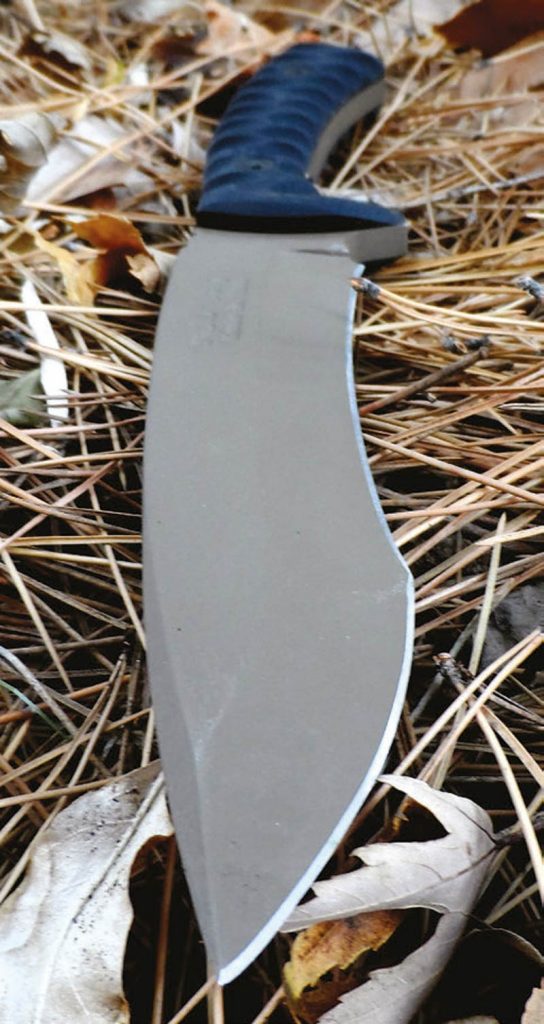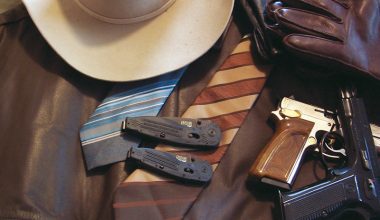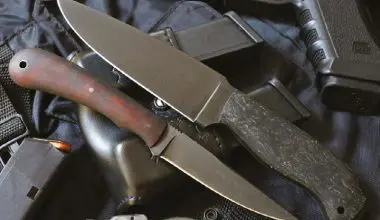

IF a GI blade is produced without end-user input, troops may end up with things like the M1873 trowel or M1903 rod bayonets. Conversely, when GI blades are designed and manufactured by a man with decades of active duty—including a dozen combat tours and a lot of time in SpecOps—you can bet the blades he offers will be mission-capable.
Such is the case with Rustick Knives of Fayetteville, North Carolina, which are designed and handmade by retired Sergeant Major Jack Stottlemire. His following is no longer just among the SpecOps community at nearby Ft. Bragg, but includes blade cognoscenti from all branches, special-response teams nationwide, and others who may stake their life on the reliability of their working knife.
Stottlemire has a “standard” line of blades but will also custom forge to your specifications, as long as it’s indeed your design. Common denominators among his production knives are the use of 80CrV2 steel, heavy full-tang construction, and G-10 grip scales. These are a great foundation for a no-excuses, hard-use blade. Blade shapes can be mission-specific, but all are configurations that have proven useful, and they are thoughtfully engineered free of any semi-functional features designed only to look good in a catalog.
Stottlemire’s knives usually come with a Cerakote finish (flat dark earth a favorite) and in a Kydex sheath, although he also offers some great leather from his bud Donnie Harp. You can find Donnie’s work on Facebook by searching for Harp Leather.
Last fall in time for Veteran’s Day, Stottlemire brought out the “Kraken,” a design collaboration between Jack and his former SpecOps playmate Jim Erwin, of U.S. Elite Gear. This particular blade is only available from U.S. Elite Gear, but it makes a good poster child for Stottlemire’s blades as it incorporates his signature features of heavy 80CrV2 construction, G-10 grip scales, Cerakote finish, Kydex sheath, and custom-quality craftsmanship on a production blade.
The Kraken by Rustick (as opposed to “fantasy” blades and cheap-o imports similarly named) is made in the USA from American steel and robustly built to take the worst kind of abuse. The Kraken starts with a billet of .27-inch 80CrV2 steel that remains as a full tang for its 11.357-inch overall length. A high-carbon steel, it heat-treats well. Jack heattreats and hardens his blades to RC 58-59.
The point features a moderate drop, which is accentuated by the curved handle, but is in perfect alignment for thrusting. The rear, recurved portion of the 6 3/8-inch by quarter-inch-plus blade is precisely hollow ground. Forward of that, the blade shows a bit more belly and goes to a more obtuse, flat grind.

This differential grind combination takes more to make, but the benefit to the user is that the most-used part of the blade is easier to sharpen, and the most-abused portion (the tip) is stronger. A GI or person in survival mode will do what it takes to get back to base: chop, baton, pry and dig, and Stottlemire’s blades are designed with that in mind.
The top forward of the blade is swedged to aid in penetration. There is jimping on the top rear of the blade and top of the butt, and a pronounced and well-designed lower quillion keep an operator’s hand well aft of the sharp end during hard work.
With or without gloves, and no matter the mud, blood or oil, the deeply sculpted handle scales of black G-10 on Stottlemire’s knives give an absolute grip. Abrupt edges are slightly eased, and the scales are typically attached by four hex-head screws. The strength of G-10 composite makes them suitable to be formed at the front over the quillion, not for trim but for function. The relatively slender cross-section of the handle (7/8 inch) and its strong sculpted surface give an unusually good grip.
Weighing in at 15 ounces, this knife is solid yet lively in use. The Kraken has a slightly point-heavy balance and is secure in the hand with a variety of grip techniques, due to the aggressively sculpted grip panels.
Although G-10 is one of Stottlemire’s (and this writer’s) favorite modern handle materials, the deep sculpturing may not be ideal for all hard-use knives. The more common “screen” texture flat panels of G-10 seen on many blades may be more appropriate for some knives, especially those of a smaller dimension or a blade that is used for long periods.

For instance, his four-inch utility/fighter, which also features a deep choil on the forward grip to help in controlling close-up work without costing blade length, can be had with a screen texture. A truly robust blade of this shape should serve well as a hunting or wilderness field knife.
Rustick Knives also does a lot of custom work, as long as you don’t want something silly. Not that you’d ever need it, but everything that comes out of Stottlemire’s shop brings with it a lifetime guarantee against defects in materials and workmanship.
Whether you carry one of Jack Stottlemire’s knives into the fray or into the deep woods, you will be well served by a tool you can trust.





